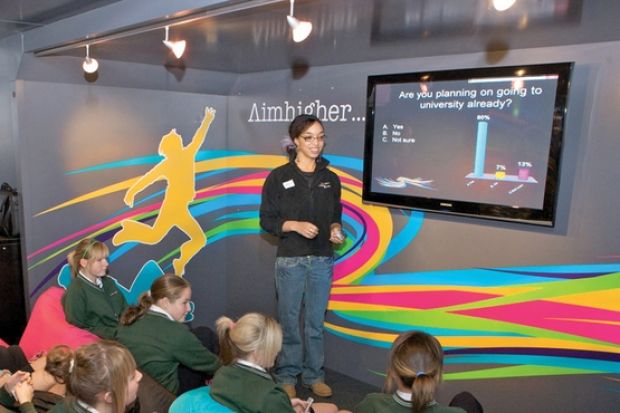Source: EMS
‘New and improved’: Willetts’ outreach plan ‘more effective’ than its predecessor
A slimmed-down successor to school outreach network Aimhigher could be set up to help universities coordinate their efforts to recruit more children from deprived backgrounds.
This is one of the recommendations made in an interim report by the Higher Education Funding Council for England and the Office for Fair Access that will inform a new national access strategy.
Under the plans, a light-touch “infrastructure or network” of regional coordinators could be created to “facilitate collaboration between universities” and schools.
The network would target primary schools and work with pupils through their secondary school and sixth-form studies.
David Willetts, the universities and science minister, said the proposed model would help to coordinate access efforts by universities, charities and other providers.
“There is no point having one school approached by three universities while another school has no contact at all,” he told Times Higher Education. “A widening-participation infrastructure or network would help coordinate all the good work that is happening.”
Mr Willetts said higher fees meant there were now more funds available - around £700 million - to fund widening-access programmes, including school outreach sessions, summer schools and campus visits.
He praised institutions such as Nottingham Trent University that are working with primary schools and backed proposals to extend such efforts across the sector.
“We can start earlier because there are benefits of targeting outreach at primary schools,” he said.
Mr Willetts admitted that the proposed scheme was likely to draw comparisons with Aimhigher, the national outreach programme scrapped by the coalition in 2011, but believed a coordinated strategy was needed.
“We’ve always said lots of good things were going on in the old regime but some of what Aimhigher was doing was not effective,” he said.
Unlike Aimhigher, which received almost £90 million of direct state funding in its final year, the new scheme will be financed using “existing funds” - likely awarded by Hefce or set aside from fees to underwrite access measures.
The announcement comes in the same week as another report warning that any cut in Hefce funding for widening participation would have a “disproportionate” effect on newer universities.
The Hefce-commissioned study, published on 5 March, says “a significant amount of [widening participation] activity would be reduced or cease altogether” if such action were taken.




